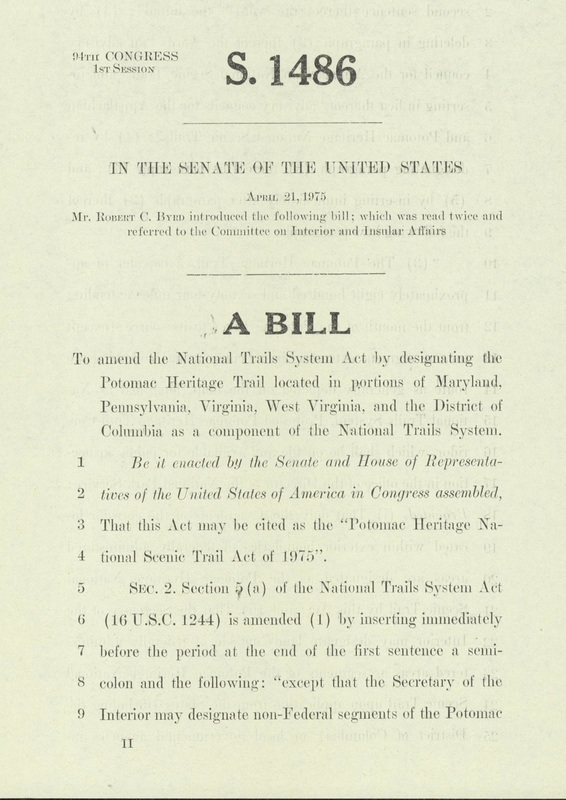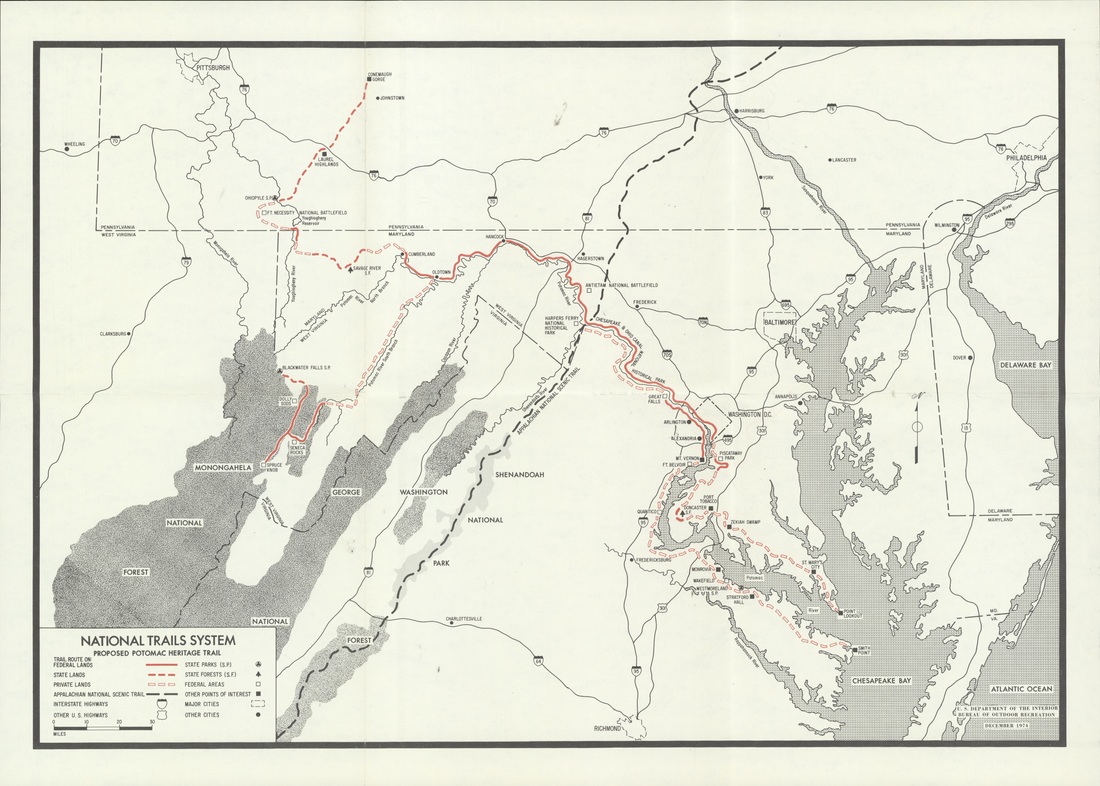|
By Jody Brumage
At the same time, Senator Byrd introduced his own bill in the Senate to establish the Potomac Heritage Trail, which had originally been proposed in 1968 as part of the National Trails System Act. Following the river’s course from Point Lookout, Maryland to its division in Old Town, Maryland, where it would spit and follow the river’s northern and southern branches, the trail was proposed to follow along the existing C&O Canal Towpath wherever possible. Each bill represented a different approach to recognizing the scenic and historic significance of the Potomac River. For Congressman Gude, protection of the river meant establishing a “green sheath” zone on either shore of the river, providing a buffer to conserve the Potomac’s shorelines and natural ecosystems. This approach was highly unpopular among residents of the Eastern Panhandle of West Virginia, who expressed their views in a letter to Senator Byrd dated September 9, 1974. Senator Byrd’s approach to the issue largely followed a model he established in the 1960s, preserving natural landmarks in programs which encouraged tourism, which the senator was actively seeking to build as an alternative to the ailing coal industry in West Virginia. This work had included several bills sponsored by Senator Byrd in the 1960s and 70s to support the development of the Harpers Ferry National Historical Park.
By the end of 1974, Senator Byrd’s bill had received endorsement from the U.S. Department of the Interior on his bill to establish a Potomac Heritage Trail. In the summer of 1975, Senator Byrd testified before the Senate Committee on Interior and Insular Affairs, stating that “sixteen million people reside within 100 miles of this proposed route, and the millions of tourists who visit the Nation’s capital each year would have easy access to this trail.” After several more years of studies and subsequent bills, the Potomac Heritage National Scenic Trail was formally established by Congress in 1983. In part 2 of this blog series, we will explore the efforts of Maryland’s congressional leaders, including Congressman Gude’s 1974 bill, to preserve the Potomac River. Comments are closed.
|
Welcome to the Byrd Center Blog! We share content here including research from our archival collections, articles from our director, and information on upcoming events.
Categories
All
Archives
July 2023
|
Our Mission: |
The Byrd Center advances representative democracy by promoting a better understanding of the United States Congress and the Constitution through programs and research that engage citizens.
|
Copyright © Robert C. Byrd Center for Congressional History and Education
|




 RSS Feed
RSS Feed
